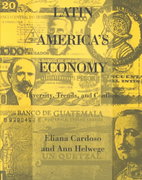Question
1. Suppose that you are considering an idea (v,c). There is uncertainty over the true value v. Looking at similar ideas from the past, you
1. Suppose that you are considering an idea (v,c). There is uncertainty over the true
value v. Looking at similar ideas from the past, you estimate that the probability that v = 1000 is
1/4 and the probability that v = 200 is 3/4. With certainty, you know that c = 500 and R = 1.
a. What is the expected value of v?
b. Should this idea be invested in given the above probabilities? Why or why not?
c. Now, suppose that you decide to consult an expert to better determine whether v =
1000 or v = 200. The expert excels at confirming high-value ideas but is rather poor at
confirming low-value ideas. Suppose that when the true value is v = 1000, the expert
always correctly declares the value as v = 1000. However, when the true value is v = 200,
the expert incorrectly declares the value at v = 1000 with probability 1/2 and correctly
declares the value at v = 200 with probability 1/2. Use Bayes' rule to determine the
probability that v = 1000 when the expert declared that the value is v = 1000.
d. Using your answer to part c, what is the corresponding expected value of v?
e. Should this idea be invested in given the updated probabilities? Why or why not?
f. Compare your answers to b and e. What does this suggest about the importance of
Bayes' rule and updating probabilities when new information is available?
2. Consider two ideas (v,c), where idea 1 is (5,25), and idea 2 is (4,15). Suppose that, at
most, one idea may be selected. We are using the efficiency of the ideas to determine which
idea should be invested in.
a. If R = 2, which idea should be selected?
b. If R = 4, which idea should be selected?
c. If R = 8, which idea should be selected?
d. If R = 16, which idea should be selected?
e. If R = 32, which idea should be selected?
f. What do these answers suggest regarding the importance of c relative to v as R
increases?
3. Consider three ideas (v,c), where idea 1 is (5,25), idea 2 is (4,15), and idea 3 is (6, 29).
Find a value of R such that:
a. Idea 1 is chosen.
b. Idea 2 is chosen.
c. Idea 3 is chosen.
If such a value R does not exist for any of the above, briefly explain why.
Step by Step Solution
There are 3 Steps involved in it
Step: 1

Get Instant Access to Expert-Tailored Solutions
See step-by-step solutions with expert insights and AI powered tools for academic success
Step: 2

Step: 3

Ace Your Homework with AI
Get the answers you need in no time with our AI-driven, step-by-step assistance
Get Started


